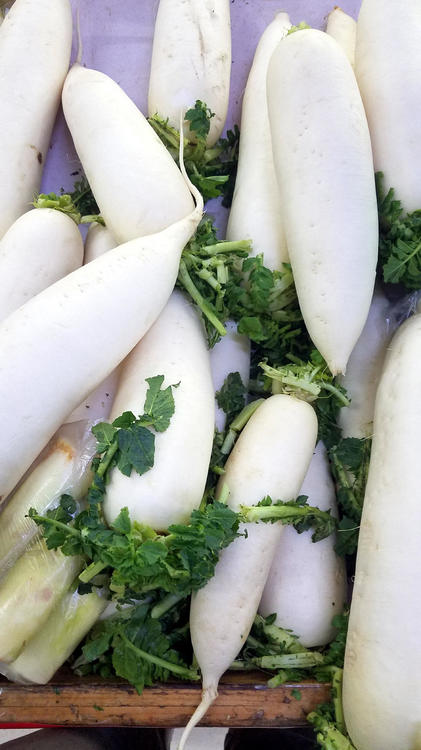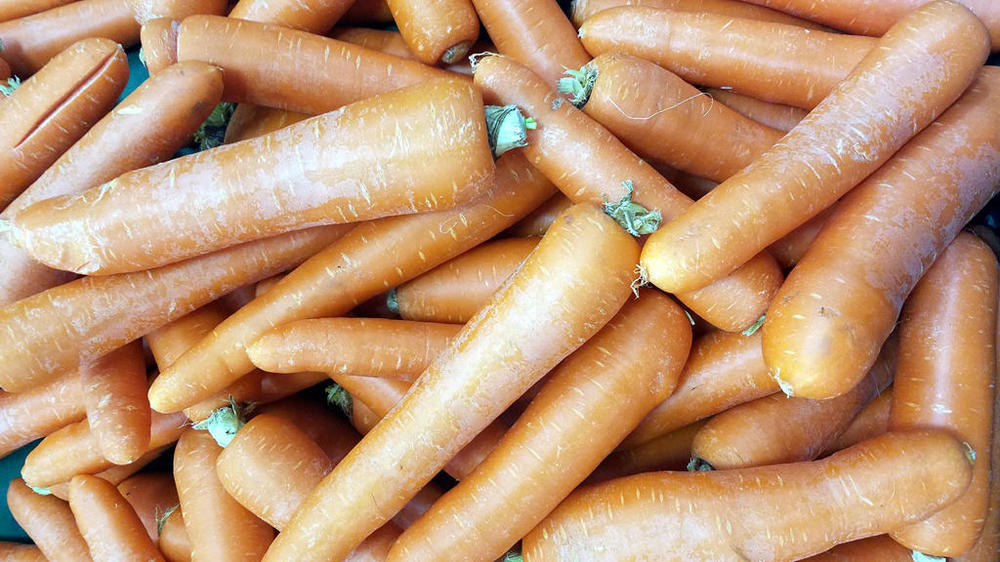China often has its own classification system for plants and animals. For example, they are convinced that mice and rats are the same species, just that the rats are old mice. This is reflected in the names they use.
They also consider carrots and radishes to be the same, despite them being botanically unrelated.
I'll start with radishes. The general term in Chinese for radishes is 萝卜/蘿蔔 (Mand: luó bó; Cant: lo4 baak6). However what we get almost always is the large white version, Raphanus sativus longipinnatus, commonly called 'daikon' after the Japanese name. In the UK, both 'daikon' and 'mooli' are used, the latter being derived from the Hindi name. In Chinese 白萝卜/白蘿蔔 (Mand: bái luó bó; Cant: baak6 lo4 baak6), meaning 'white radish'.
These are used in many ways: Cut into chunks and boiled in soups or hot pots, cut into strips and stir fried, used in noodle dishes, pickled, salted, candied etc, etc.
We do, very occasionally, see the small red radishes known in the west. They are known as 小萝卜/小蘿蔔 (Mandarin: xiǎo luó bó; Cant: siu2 lo4 baak6), meaning 'small radishes'. Few people know what do do with them.
Then it gets silly. Here we go with 'red radish'. Not the above but these.
Daucus carota sativus
红萝卜/紅蘿蔔 (Mand: hóng luó bó; Cant: hung4 lo4 baak6)
The 'umble carrot.
These are used in the same way as the white variety above. Also a popular side dish is potato and carrot, cut into fine strips, stir fried with garlic and finished with white rice vinegar. Very nice.
The shoots of all varieties are also eaten.



.thumb.jpg.4b2077cb6bf6680a670f233085231ae4.jpg)


